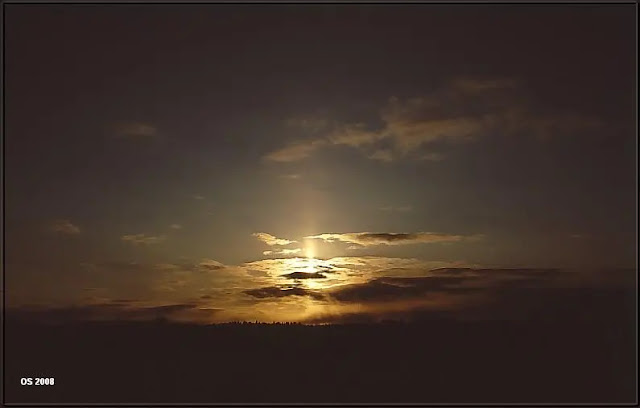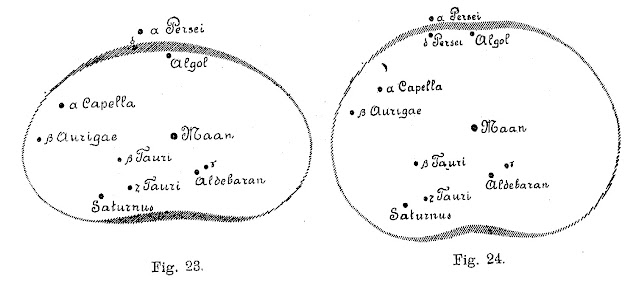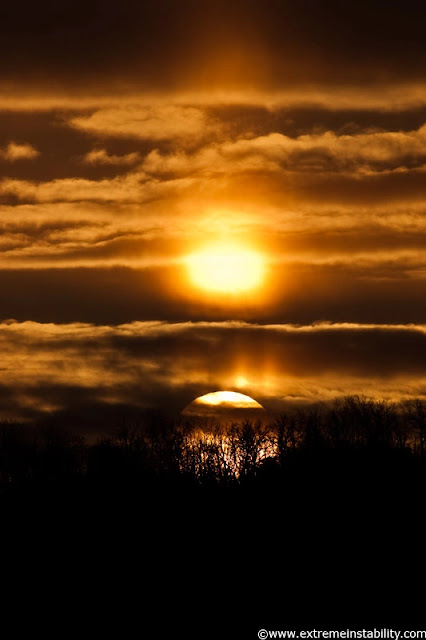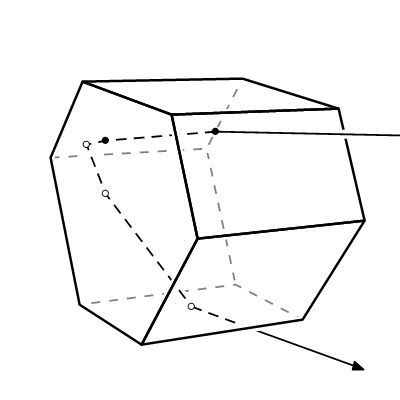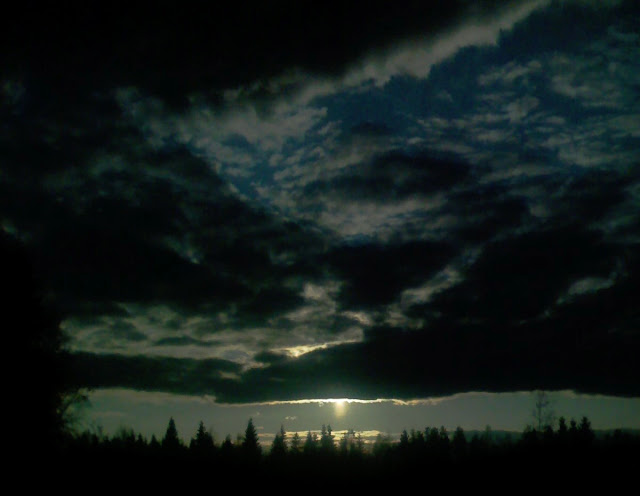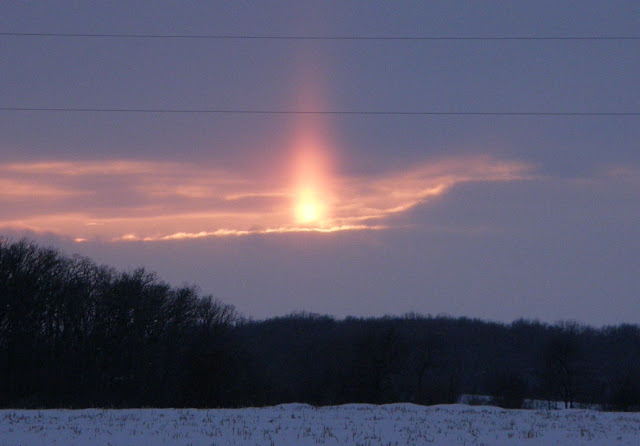A little longer gap since the last post. The upcoming halo book occupied me during the last days as I made last adjustments before submitting it last night to the publisher for layout.
Anyway, the issue here is fake sun again. The photos above were taken by
Olli Sälevä in Rovaniemi. The first two are fresh, from 22 February.
After I had written about the fake sun, Olli started to look for it and
took these photos. He saw a bright yellow fake sun that day near the
sunset, but parking the car and getting the camera ready took 2-3
minutes during which time the real sun already appeared and the fake sun
waned. But you still can get the idea here. A bit later the sun got
again behind cloud and a spot of light was seen above sun.
The
two last Olli's photos are older, from 25 April 2008, showing a
beautiful sky with Strato/Altocumulus and pillar. Again here is a
situation where fake sun might appear.
Now that I have written
already four posts about the fake sun and seen some photos of
candidates, it is time to say what I think about the issue. To save some
dignity with the phenomenon - so that we would not start reporting
every brightening in sun pillar as fake sun - we should only report as
fake sun those that have the potential to be taken as real sun. This
also takes into an account cases where the real sun is seen, but in
which the fake sun is so bright that it could be taken as real sun if
the real sun was behind the cloud. By this criteria, I think, the fake
sun is a rare phenomenon. And one needs an account from the observer of
the sighting, determining it alone from the photos is not enough. The
photos by Julie Broson
show a true fake sun, because at first for a moment Julie did not know
which one was the real sun. Neither was, as the real sun was behind the
cloud.
